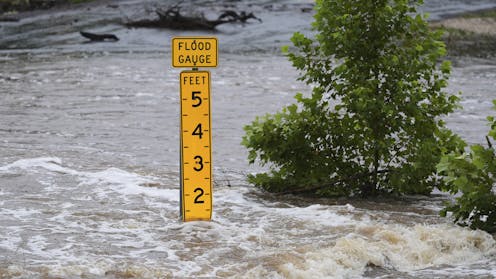Flash floods can strike with little warning, as seen on July 4, 2025, when a sudden surge swept down the Guadalupe River in Texas. Despite advancements in flood prediction technology and various alert systems, effectively conveying risks and prompting public action remains a significant challenge. Researchers emphasize that understanding human behavior is vital in bridging the gap between technological solutions and community preparedness.
The Importance of Human Behavior in Emergency Alerts
Research led by Keri K. Stephens, an expert in emergency communications, reveals that people’s past experiences with floods significantly influence their awareness of risks. Those who have previously encountered flooding are often more attuned to potential dangers than individuals who have not. Many individuals unfamiliar with flood situations may not grasp the nuances of threats like storm surges or flash floods.
While emergency responders regularly engage in drills and tabletop exercises to enhance their readiness, community-wide participation in such preparedness efforts remains limited. To address this gap, Stephens’ team has collaborated with the Texas Water Development Board to create resources that help local flood officials prioritize and communicate essential information to their communities effectively.
The widely recognized message “Turn Around Don’t Drown” is one example of a flood warning. However, it may not resonate with all demographics. For instance, a newly developed message, “Keep Your Car High and Dry,” specifically targets young adults, who often underestimate risks but are concerned about protecting their vehicles from flood damage.
Effective Communication Strategies
Understanding how individuals interpret flood warnings is crucial. Many people express skepticism when they hear repeated alerts. A common sentiment is: “Another flash flood warning. We get these all the time. It’s never about flooding where I am.” This highlights a fundamental issue in flood communication—people often have differing interpretations of what a flood warning entails, which can depend on their proximity to the risk.
In addition to formal alert systems, informal communication networks play a significant role in disseminating information. Emergency managers often reach out directly to local businesses and organizations, ensuring that critical updates are relayed to those who may be affected. Such human-centric approaches can provide confirmation that warnings have been received, which automated systems may not guarantee, especially during infrastructure failures.
Effective warning messages should incorporate five key components: a clear description of the hazard, location-specific information, actionable guidance, timing cues, and a credible source. The Federal Emergency Management Agency (FEMA) has developed the Integrated Public Alert and Warning System (IPAWS) to assist authorities in crafting timely alerts. Despite its strengths, IPAWS has limitations, as not all emergency managers are trained to utilize it effectively, and messages can sometimes be sent to unintended geographic areas.
Additionally, hyperlocal community notification systems can complement IPAWS by allowing residents to opt-in for targeted alerts. However, these systems face challenges, including the need for community awareness and individuals’ willingness to share personal contact information.
Social media has also emerged as a vital communication tool, with emergency managers increasingly leveraging these platforms to disseminate updates. Nonetheless, the reach of social media is often limited to specific demographics, as not everyone consistently checks these channels for information.
The key to effective emergency communication lies in redundancy across multiple channels. Research indicates that individuals require multiple warnings to fully grasp the urgency of a situation. Encouraging interpersonal communication can amplify the message, as highlighted by former Natural Hazards Center Director Dennis Mileti, who noted, “The wireless emergency alerts system is fast. Mama is faster.”
Confronting Warning Fatigue
Professionals from the National Weather Service, FEMA, and the Federal Communications Commission have raised concerns about “warning fatigue,” where recipients become desensitized due to the frequency of alerts. Understanding when and why individuals experience this fatigue is crucial, as it may hinder effective responses during critical situations.
This dilemma presents a challenge for officials who are obligated to warn at-risk populations while recognizing that excessive alerts can diminish their impact. Further research is required to differentiate between warnings perceived as irrelevant and those that genuinely pertain to individuals’ immediate surroundings.
Ultimately, crafting messages that resonate with specific audiences and fostering community networks are essential strategies for enhancing emergency response systems. Ongoing research aims to identify effective methods for achieving these goals both in the United States and internationally. It is vital to apply behavioral insights to every aspect of communication systems, ensuring that both technology and human decision-making work in tandem to improve public safety.
Research conducted by Keri K. Stephens has received funding from the Texas Water Development Board, the Texas General Land Office, and the National Science Foundation. Published results are peer-reviewed, reflecting the views of the author rather than those of the funding organizations. Hamilton Bean has also secured research funding from the U.S. Department of Homeland Security and the National Oceanic and Atmospheric Administration, with similar peer-reviewed publications.



























































